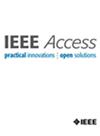Optimum Selection of Lithium Iron Phosphate Battery Cells for Electric Vehicles
IF 3.4
3区 计算机科学
Q2 COMPUTER SCIENCE, INFORMATION SYSTEMS
引用次数: 0
Abstract
This paper presents a systematic approach to selecting lithium iron phosphate (LFP) battery cells for electric vehicle (EV) applications, considering cost, volume, aging characteristics, and overall performance. A battery selection algorithm is developed, and to investigate its functionality, a case study to evaluate four different LFP battery cell models based on their long-term behavior in a 40 kWh battery pack is conducted. The algorithm integrates a vehicle energy consumption model to better account for the aging impacts of different cell choices, where battery performance is analyzed based on the Worldwide Harmonised Light Vehicles Test Procedure (WLTP) over a 10-year simulated period, considering five driving cycles per day. In order to ensure a fair assessment, the model accounts for variations in battery pack weight as the sole influencing factor on vehicle dynamics. The results compare vehicle range, battery pack mass, cost, cell degradation, and volume for each battery option. The case study findings indicate that the developed method found A123 Systems ANR 26650m1 battery cell superior among the considered four options offering the best trade-off between longevity and cost-effectiveness, making it a highly suitable choice for durable and efficient EV battery packs. This study underscores the importance of considering several critical factors including aging based on detailed driving cycles, together for the most suitable battery selection in designing cost-effective, long-lasting EV energy storage solutions.求助全文
约1分钟内获得全文
求助全文
来源期刊

IEEE Access
COMPUTER SCIENCE, INFORMATION SYSTEMSENGIN-ENGINEERING, ELECTRICAL & ELECTRONIC
CiteScore
9.80
自引率
7.70%
发文量
6673
审稿时长
6 weeks
期刊介绍:
IEEE Access® is a multidisciplinary, open access (OA), applications-oriented, all-electronic archival journal that continuously presents the results of original research or development across all of IEEE''s fields of interest.
IEEE Access will publish articles that are of high interest to readers, original, technically correct, and clearly presented. Supported by author publication charges (APC), its hallmarks are a rapid peer review and publication process with open access to all readers. Unlike IEEE''s traditional Transactions or Journals, reviews are "binary", in that reviewers will either Accept or Reject an article in the form it is submitted in order to achieve rapid turnaround. Especially encouraged are submissions on:
Multidisciplinary topics, or applications-oriented articles and negative results that do not fit within the scope of IEEE''s traditional journals.
Practical articles discussing new experiments or measurement techniques, interesting solutions to engineering.
Development of new or improved fabrication or manufacturing techniques.
Reviews or survey articles of new or evolving fields oriented to assist others in understanding the new area.
 求助内容:
求助内容: 应助结果提醒方式:
应助结果提醒方式:


